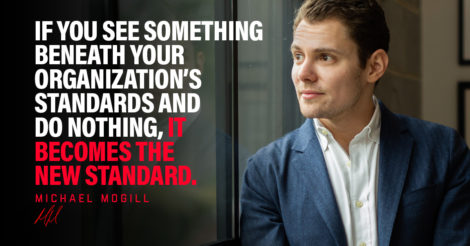In today’s rapidly evolving legal landscape, organizational change has become a necessity for survival and growth. Organizations like your law firm must continue to adapt and innovate to keep pace with the dynamic demands of your industry — and if you haven’t noticed already, there are major changes coming its way.
While there are changes both big and small hitting the legal world, that doesn’t mean they have the power to take your firm out — if you get ahead of the curve. We’re here to help you navigate all of those changes.
In this article, we’ll delve deep into the six most common barriers to organizational change in your law firm — so you can overcome them with ease:
- Fear of the Unknown
- Poor Communication
- Change Fatigue
- Misalignment
- Lack of Accountability
- Leadership
Before we go into the six barriers to organizational change, let’s start with the basics so you can understand what you’re getting yourself into.
Defining Organizational Change
Organizational change refers to the process of implementing new strategies, structures, or processes within a company to improve its performance and adapt to external circumstances.
But change doesn’t automatically mean bad news is coming.
Change is vital to any organization. Law firms like yours have to continually evolve to avoid becoming obsolete or losing your competitive edge. When you embrace change, you remain relevant, enhance efficiency, and capitalize on emerging opportunities for good.
Challenges for Growing Law Firms
As a growing law firm, implementing organizational change can be particularly challenging due to various factors unique to the legal industry. One significant problem to overcome is the resistance to change traditionally exhibited by lawyers and legal professionals.
Not sure what we mean? Take a look around your own law firm right now. What do you notice?
- Have you adopted the latest technologies for you and your team to use?
- Are you investing in your team members to equip them with everything they need to succeed?
- What does your law firm’s office and reception areas look like?
- How often are you hiring new team members?
The truth is that law firms often have a traditional and conservative culture that values precedent and stability. It’s not always easy convincing individuals to take on new practices, strategies, ideas, and more.
Luckily for you, you have the chance to be the change you want to see in the industry as a whole — only if you’re willing to do what it takes!
Now that you understand what organizational change is and why it’s not always easy for law firms to do, it’s time to get into the six most common barriers — and more importantly, how to overcome them.
Fear of the Unknown as a Barrier to Organizational Change
Change can be unsettling, and individuals often fear the uncertainty it brings, especially in such unprecedented times as we’re living in now. Workers have been known to worry about the impact organizational change may have on their job security, income, and career progression, and the easiest way to intensify these fears is thanks to a lack of alignment within the organization.
If you’re the leader of your law firm, you need to be open, honest, and upfront with your team members if they’re ever worried about their standing within your practice.
If you want to avoid problems like these in the future, consider acquiring these practices into your leadership style:
Address concerns
Always encourage open dialogue and create opportunities for your team members to express their concerns and ask questions. Whether you achieve this through team meetings, weekly Slack announcements, or one-on-one conversations, it’s important to make it happen.
When you actively listen to your team members and acknowledge their fears and uncertainties, you will demonstrate empathy and build trust.
Provide regular updates
Never leave your team feeling like they’re in the dark. Regularly share updates on the progress of the change initiatives, including any milestones reached, hires made, and future plans for your law firm.
When you open this consistent flow of information, you keep your team members informed and reassure them that they are not alone. It also helps to manage rumors, misinformation, and drama in the workplace, which can further contribute to resistance and anxiety.
Pro Tip: If you want to learn more about the dangers of drama in the workplace, check out Cy Wakeman, the ultimate drama diffuser and popular Game Changers Summit speaker. You won’t believe what you’ll learn from her infinite wisdom!
Offer support and resources
You want to lead a team of people who are ready and willing to make your firm successful — but they will only help you if you help them in return.
Offer support and resources to help your team members navigate through the changes. Provide training, coaching sessions, and resources to equip them with the necessary skills and knowledge. Provide guidance on how they can adapt to the changes coming their way and take advantage of new opportunities.
When you demonstrate your commitment to their development and success, you’ll help alleviate anxiety and create a more positive relationship to change.
Poor Communication as a Barrier to Organizational Change
When implementing change within your law firm, effective communication plays a crucial role in ensuring that the message from leadership aligns with the perception of your team members.
Strong communication within a law firm is vital for:
- Efficient workflows
- Exceptional client service
- Seamless team collaboration
- Risk management
- Fostering an effective firm culture
- And so much more
Just as in any relationship, communication is key to keeping all parties connected. The same goes for your law firm: It’s a foundational element that supports the overall success and growth of your firm.
Change Fatigue as a Barrier to Organizational Change
According to a study from Gartner, team members’ ability to cope with change is a mere 50% of what it was pre-pandemic.
Read that statistic again.
Change fatigue is real, especially when your team has already undergone so much of it in such a short amount of time.
What’s especially interesting is that the Gartner study found that smaller changes create more fatigue. These changes could be as seemingly-menial as moving to a new team or getting a new manager, and those have the ability to impact team members 2.5 times more than larger, more structural changes, such as a merger or acquisition.
If you feel change fatigue is setting in at your own law firm, beware of the huge consequences, such as:
- Hindering enthusiasm
- Resisting new company-wide transformation efforts
- Refusing to trying new initiatives
- Undermining leadership
- And so much more
However, as a committed law firm owner, if you take the time to demonstrate a track record of successful change implementation and highlighting the positive outcomes achieved, you can work towards restoring confidence and inspiring your team members’ engagement, no matter how much change is heading their way.
Misalignment as a Barrier to Organizational Change
In many law firms, a significant barrier to successful change is a misalignment between the roles and responsibilities of team members and the desired outcomes of the organization.
When your team members’ duties and responsibilities are not aligned with your firm’s strategic objectives, it has the potential to create a disconnect that can lead to resistance to change. If you want to avoid this happening in your firm, try these strategies:
Clarifying roles
When team members understand how their specific roles contribute to the overall objectives of your firm, they are more likely to see the relevance and importance of the proposed changes. Clear communication about expectations and how their work will be impacted helps your team members understand the part they play in the change process — and more importantly, it reduces uncertainty or ambiguity.
Establishing clear expectations
Clearly communicate the goals and objectives of the change in question, and be sure to communicate how success will be measured. If your team members have a clear understanding of what is expected of them during the change process, they can align their efforts accordingly and focus on contributing to the desired outcomes — AKA, making your law firm successful.
Aligning incentives with the desired change
Incentives can be excellent motivators for keeping your team focused on the overall vision of your law firm, specifically when it comes to establishing key performance indicators, or KPIs, within your organization.
When your team members see that their efforts towards change are acknowledged and rewarded, they are more likely to embrace and actively participate in the change process.
Lack of Accountability as a Barrier to Organizational Change
In any change effort, having clear accountability is crucial for its success. When there is a lack of clarity around who is responsible for specific tasks or outcomes, change initiatives can falter. This is because when everyone assumes that someone else is taking ownership, no one feels accountable and progress stagnates — or even worse, the project has the possibility of coming to a halt altogether.
To address this, law firms should focus on clearly defining roles, establishing transparent reporting structures, and holding individuals accountable for their contributions. By creating a culture of accountability, law firms can empower their teams and ensure that change initiatives progress smoothly.
Your law firm has the opportunity to promote a sense of ownership and ensure that change initiatives progress smoothly. When each of your individual team members understands their responsibilities, they are empowered to do what it takes and hold themselves accountable for their contributions — so that you don’t have to.
Leadership as a Barrier to Organizational Change
Effective leadership during change is essential for fostering a positive work environment through engagement, managing resistance, and achieving successful outcomes.
As Crisp’s Founder & CEO Michael Mogill always says, you’ve got to be the example for your team. It’s your responsibility to champion the change and show your team that they can do whatever they put their minds to with your guidance and your organization’s investment into them.
You can create a supportive environment while prioritizing active listening, providing timely and transparent communication, articulating a clear vision, and offering guidance and support. The more you do that, the longer your team members will stay at your firm and prove their loyalty.
Strong leadership in a law firm is essential for providing strategic direction, making informed decisions, shaping the organizational culture, keeping your team busy and productive, nurturing client relationships, managing change, and building a reputable brand. Effective leaders like Crisp’s very own Michael Mogill inspire and guide the firm towards success while also fostering an environment of trust, collaboration, and continuous improvement.

















